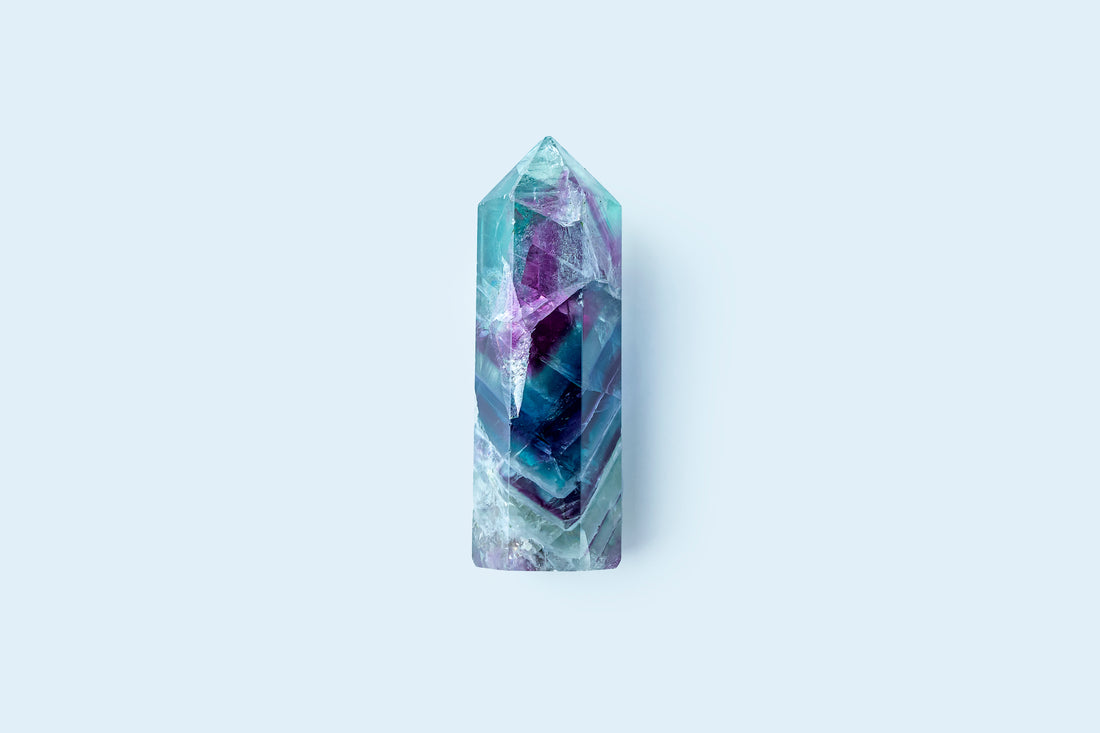
Fluorite: Healing Properties, History and Benefits
Share
Fluorite, also known as fluorspar, is the mineral permutation of calcium fluoride with the chemical formula CaF2. The stone is a halide mineral that is completely translucent in its purest form. However, the crystal may take on different minerals or compounds that allow it to change color depending on where it was formed. Even though the crystal itself is brittle, it is powerful and contains a streak of white that reminds you of its inherent goodness.
What is Fluorite?
Fluorite’s name actually comes from the Latin word “fluere,” which means “to flow.” This alone should give you an idea of the unique qualities that fluorite possesses. Fluorite also serves as the basis for the term fluorescence. This phenomenon occurs in certain stones due to additional compounds such as yttrium, ytterbium, and hydrocarbons that allow it to glow in the dark or flash certain types of light.
Prized by the Romans for its purple and white hues, this stone can even glow blue like the Derbyshire Blue John stones taken from caves in the English Midlands.
Why Should You Invest in Fluorite Crystals?
For one thing, fluorite is beautiful, and it will look wonderful in every jewelry piece you select. Before recorded history, ancient peoples believed that fluorite possessed healing powers that could help with aches and pains.
Simply holding the crystal will allow you to line up with its vibrations and feel the healing power that you desire. When you dive deeper into the meaning of fluorite, you will find that it promotes healthy living in several ways.
In What Ways Can You Use Fluorite Stones?
As mentioned, fluorite looks beautiful in jewelry, and it can stay in the room with you when you need positive energy. Lay the crystal on your chest when you are trying to relax or reduce your heartbeat so that you can overcome bouts of anxiety or panic attacks. Keep the crystal with you when you go to work, workout, or experience new things.
Some people would tell you to take it on a date to help develop relationships. You can also meditate with your fluorite crystals so that you can more deeply tap into your inner thoughts, clear your mind, and feel at one with nature.

What Are the Benefits of Using Fluorite Crystals?
Using fluorite crystals in your daily practice, routine, or meditation provides you with several benefits. At times, the benefits are tied to the color stone you choose. In other cases, fluorite benefits you regardless of its color.
If you have green fluorite, it will connect with your heart chakra. Purple fluorite will connect with your third-eye chakra and associates with Capricorn, Aquarius, and Pisces. It also assists with meditation, helping you find clarity in your life.
Practitioners also use fluorite to help with focus and concentration. Emotionally, you can use fluorite to boost your libido and weather the most difficult times of your life (COVID-19 comes to mind.)
Cleanse your aura by rotating the crystals over yourself in a clockwise motion. If you feed your fluorite crystals with positive energy, you can take that crystal with you to work or any other place where stress seems to overwhelm you. Speak into the crystal good intentions, carry those intentions with you, and give your crystals more direction when needed.
Where Can You Find Fluorite?
Fluorite is found and available around the world. It is most often discovered in deposits of lead silver, galena, sphalerite, and/or cobalt. The stones have been found with up to 48 facets, and they range in size and shape depending on where they are recovered.
From China to South Africa, Mongolia, France, and Russia, other noteworthy deposits include Mexico, Illinois, Missouri, Kentucky, and Colorado. And, as mentioned, there are the Blue John deposits in Derbyshire.



